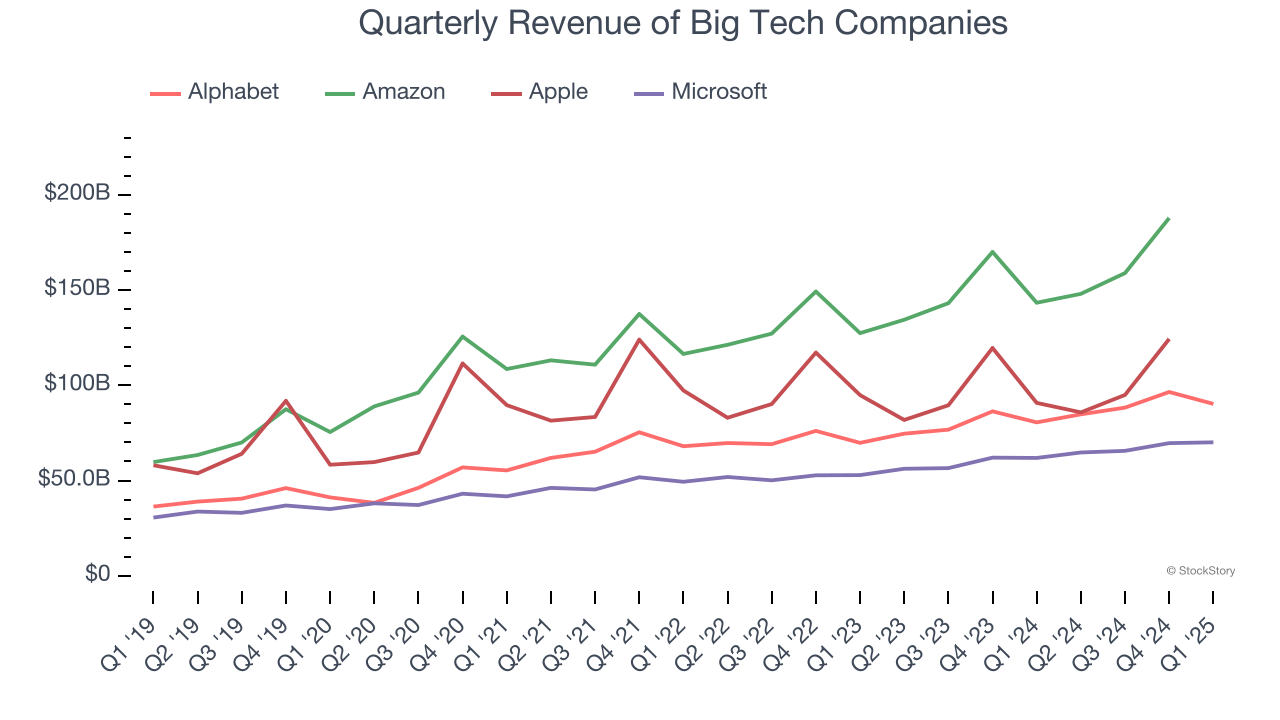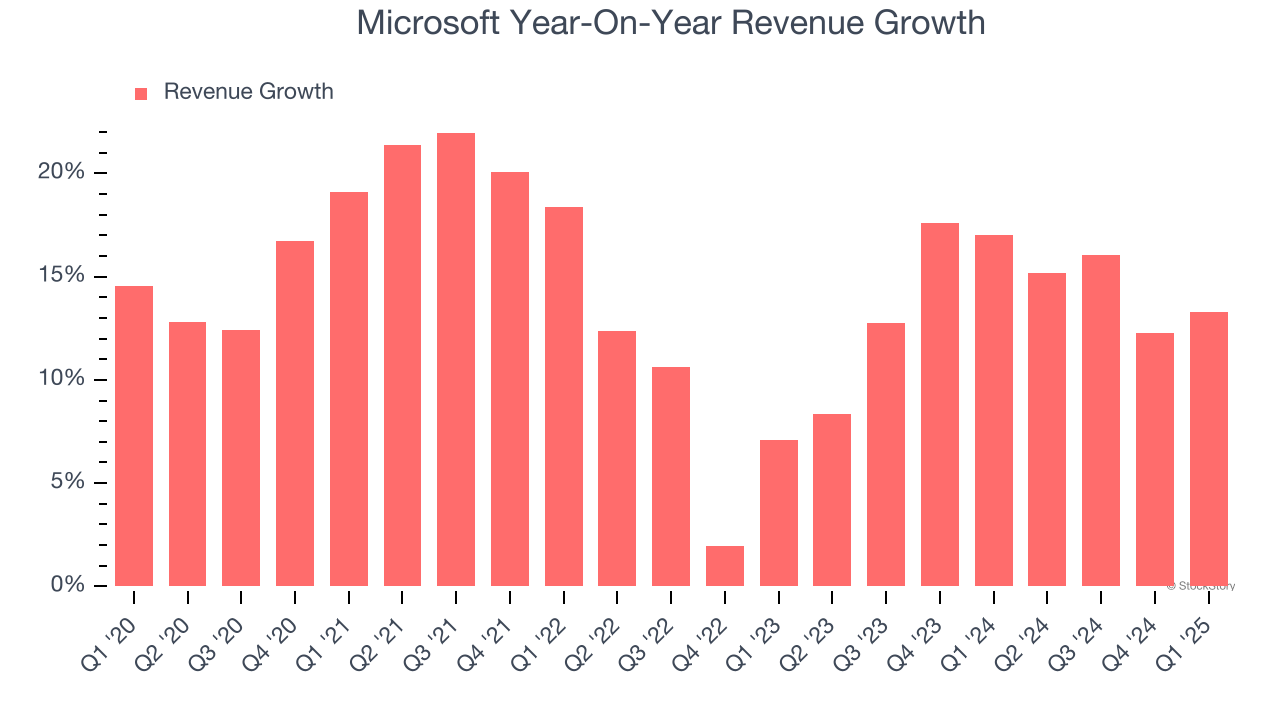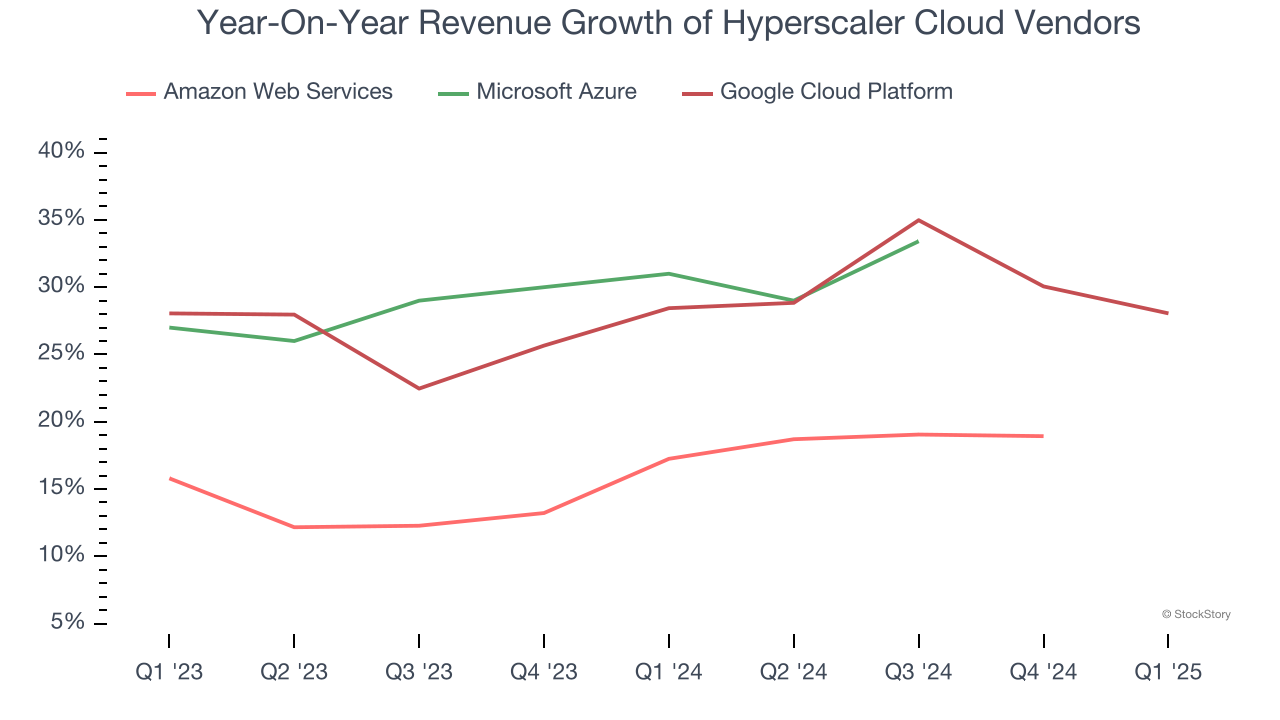
Tech giant Microsoft (NASDAQ:MSFT) announced better-than-expected revenue in Q1 CY2025, with sales up 13.3% year on year to $70.07 billion. Its GAAP profit of $3.46 per share was 7.6% above analysts’ consensus estimates.
Is now the time to buy Microsoft? Find out by accessing our full research report, it’s free.
Microsoft (MSFT) Q1 CY2025 Highlights:
- Revenue: $70.07 billion vs analyst estimates of $68.44 billion (2.4% beat)
- Operating Profit (GAAP): $32 billion vs analyst estimates of $30.26 billion (5.7% beat)
- EPS (GAAP): $3.46 vs analyst estimates of $3.22 (7.6% beat)
- Intelligent Cloud Revenue: $26.75 billion vs analyst estimates of $26.13 billion (2.4% beat)
- Business Software Revenue: $29.94 billion vs analyst estimates of $29.63 billion (1.1% beat)
- Personal Computing Revenue: $13.37 billion vs analyst estimates of $12.64 billion (5.8% beat)
- Gross Margin: 68.7%, down from 70.1% in the same quarter last year
- Operating Margin: 45.7%, up from 44.6% in the same quarter last year
- Free Cash Flow Margin: 29%, down from 33.9% in the same quarter last year
- Market Capitalization: $2.93 trillion
Revenue Growth
Microsoft proves that huge, scaled companies can still grow quickly. The company’s revenue base of $138.7 billion five years ago has nearly doubled to $270 billion in the last year, translating into an exceptional 14.3% annualized growth rate.
In light of its big tech peers, however, Microsoft’s growth trailed Amazon (17.9%), Alphabet (16.6%), and Apple (8.1%) over the same period. Comparing the four is relevant because investors often pit them against each other to derive their valuations. With these benchmarks in mind, we think Microsoft’s price is fair. 
Long-term growth reigns supreme in fundamentals, but for big tech companies, a half-decade historical view may miss emerging trends in AI. Microsoft’s annualized revenue growth of 14% over the last two years aligns with its five-year trend, suggesting its demand was predictably strong. 
This quarter, Microsoft reported year-on-year revenue growth of 13.3%, and its $70.07 billion of revenue exceeded Wall Street’s estimates by 2.4%. Looking ahead, sell-side analysts expect revenue to grow 12% over the next 12 months, a slight deceleration versus the last two years. This projection is still healthy and illustrates the market sees some success for its newer products.
Today’s young investors won’t have read the timeless lessons in Gorilla Game: Picking Winners In High Technology because it was written more than 20 years ago when Microsoft and Apple were first establishing their supremacy. But if we apply the same principles, then enterprise software stocks leveraging their own generative AI capabilities may well be the Gorillas of the future. So, in that spirit, we are excited to present our Special Free Report on a profitable, fast-growing enterprise software stock that is already riding the automation wave and looking to catch the generative AI next.
Intelligent Cloud: Azure & Cloud Computing
The most pressing question about Microsoft’s business is how much AI can boost its revenues. The company's cloud computing division, Intelligent Cloud, is one we watch carefully because its Azure platform and server/database offerings could be the biggest beneficiaries of the AI megatrend. The segment also boasts consistently high growth rates and shows no signs of stopping.
Intelligent Cloud is 37.1% of Microsoft’s total sales and grew at a 16.6% annualized rate over the last five years, faster than its consolidated revenues. The last two years paint a similar picture as sales grew by zero annually.

Intelligent Cloud’s 20.8% year-on-year revenue growth exceeded expectations in Q1, beating Wall Street’s estimates by 2.4%.

In terms of market share, Azure is a close second as its run-rate revenue (current quarter’s sales times four) is around $80 billion versus roughly $100 billion and $50 billion for AWS and Google Cloud. If Azure can continue posting high growth rates in the coming years, it certainly has a chance of catching up to AWS.
Key Takeaways from Microsoft’s Q1 Results
We enjoyed seeing Microsoft beat analysts’ revenue expectations this quarter. We were also glad its operating income outperformed Wall Street’s estimates. Overall, we think this was a solid quarter with some key areas of upside. The stock traded up 6% to $416.03 immediately after reporting.
Sure, Microsoft had a solid quarter, but if we look at the bigger picture, is this stock a buy? The latest quarter does matter, but not nearly as much as longer-term fundamentals and valuation, when deciding if the stock is a buy. We cover that in our actionable full research report which you can read here, it’s free.
